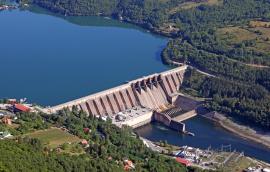Filter By Expert
A.Kadir Yildirim Aaron Bernstein Aaron David Miller Aasmaa Chaoui Abdelhakim Yahyane Abdullah Aydogan Abigail Levine Abigail Thornton Abiodun Oluyomi Adam Eddouss Adam G. Lichtenheld Adan Obeid Adbullahi Alim Adrián Carrasquillo Lecároz Adrian Duhalt Adrienne Bradley Afschin Gandjour Agnès Bénassy-Quéré Agustín Vallejo Ahmed Awan Aidan Lyde Aisha Al-Sarihi Akshaya Venkatesh Alan Beltran Lara Alanoud Al Sharekh Alan Troner Alberto Abad Suárez Ávila Aldo Barrita Alejandro Posadas Aleksander Ksiazkiewicz Alex Alexander Alexander Hernández Romanowski Alexander J. Blum Alexandra Caloudas Alexandra E. Bello Alfonso Valenzuela Aguilera Alfred C. Glassell Ali A. Valenzuela Alicia L. Johnson Alisha Small Alper Bulut Al Troner Amina Drhimeur Amina Zarrugh Amy Ando Amy Barrett Amy Brooks Amy Myers Jaffe Amy Myers Jaffe Ana Elena Fierro Anaeze C. Offodile II Ana Grajales Anahi Molar-Cruz Ana Hogan Ana Lilia Moreno González Ana Martín Gil Ana Martín Gil Ana S. Iltis Andrea Clabough André Barbé André Pfob Andrés Castro Andrew Bowen Andrew Dobson Andrew Erickson Andrew S. Erickson Andrew W. P. Lee Anna B. Mikulska Anna Ferri, M.P.P. Anne Dayton Annelle Sheline Ann Lê Annum Jaffer Ariana Marnicio Arlynn Ambriz Ashleigh Johnson Ashleigh Johnson Ashleigh Johnson Ashley Gibson Assata Richards Asya Ardawatia Athiphat Muthitacharoen Augustin Ibanez Autumn Engebretson Avery Davis-Roberts Aynne Kokas Ayse McCracken Baltazar Solano Rodríguez Barak Barfi Barry Eichengreen Bashar H. Malkawi Beatriz Mayor Beatriz Tomé-Alonso Bela Koshy Ben Gilbert Ben Gilbert Benigna Cortés Leiss Benjamin Chou Benjamin Ginsberg Benjamin J. Baldazo Ben Leo Ben Stevenson Bernardino Adao Beth Gerlach Beverly Barrett Beyza Yildirim Bhavana Kunisetty Bianca Schutz Bilge Erten Bill Christian Binbin Li Bindi Naik-Mathuria Bindi Naik-Mathuria Bolatito Adeyeri Borghan Narajabad Borghan Narajabad Bouchra Assarag Bozena Welborne Bo Zhao Brandon Vaidyanathan Brandon Zheng Brian C. Bennett Brian Chin Brita Staal Burcu Cigerli C. Fred Bergsten C.J. Stimson Camelia Tigau Carolina Tchintian Caroline A. Masiello Caroline Celeste White-Nockleby Caroline Snider Cary Cain Catherine Glazer Catherine Glazer, J.D. Catherine LaBrenz Catie Hilbelink Cedric Dark Celynne Balatbat Cem Birol Chan Shen Charalampos Avraam Charles Butler Charles E. McLure, Jr. Charl Jooste Chris Bronk Chris Callaghan Chris Sidey-Gibbons Chris Sidey-Gibbons Christopher Bronk Christopher F. Kulesza Christopher Greeley Christopher J. Coroneos Christopher Sabatini Christopher Scheitle Christopher Scheitle Cindy Nguyen Clara Lee Clara Luz Álvarez Clara Luz Álvarez Claudia Kemfert Cleve Tinsley IV Clint Hamilton Cody Monk Colton Cox Constantino Urcuyo Cory Capps Courtney C. Radsch Courtney Freer Cybele Diaz-Wionczek Cylette Willis Cyril Monnet D. Khastieva Dagobert Brito Dana Goerzen Daniel A. Heller Daniela Gomez-Altamirano Daniel Aguiar Daniel Argueta Daniel Bolger Daniel Brumberg Daniel Cohan Daniel Cohen Daniel Cohen Daniel Engster Daniel H. Katz Daniel J. Tichenor Daniel L. Tavana Daniel Moralí Daniel Potter Daniel Prudencio Daniel S. Wagner Daniel Weisz Argomedo Dan Mannix Dan Wallach Darryl Biggar David A. Gantz David Becker David Buckley David Carroll David Cook David Dranove David Goldwyn David H. Papell David J. Stewart David J. Teece David L. Leal David M. Satterfield David Mulford David Pérez Esparza David R. Brockman David R. Johnson David R. Mares David Ruiz David Vassar Dean F. Sittig Derek Jenkins Diana Carranza Di Di Di Di Dilip V. Jeste Dina Taha Donald Light Donald P. Baumann Doug Chapin Drew A. Helmer Driss Maghraoui Dylan McNally Dylan T. Dickens Eduardo Perez Motta Edward J. Egan Edward M. Emmett Edward P. Djerejian Edwin M. Truman Efraim Berkovich Elaine Howard Ecklund Elaine Zhang Elena López-Gunn Elena M. Marks Elena Stotts-Lee Elias Sturm Elisa Baring Elisabeth Gugl Elisabeth Kalomeris Elizabeth Buchwald Elizabeth Ferris Elizabeth M. Mendoza Elizabeth Salamanca Elizabeth Winston-Jones Emily Wang Emily Yedinak Enrique Coraza de los Santos Eric Zenón Erika de la Garza Erin Yang Eryk Kosinski Ethan T. Hunt Evelyn Li F. Gregory Gause, III Fadi Maalouf Farhan Majid Farhan Majid Faris Al-Sulayman Fatemeh Haghighatjoo Fazal Muzhary Fernando Chinchilla Flora Naylor Flora Naylor Francesco Cavatorta Francisco J. Monaldi Francisco Ortiz-Arango Frédéric Destrebecq Friedrich Kunz Gabriel Cavazos Villanueva Gabriel Collins Gabriella Hazan Gail Buttorf Garrett Kneese Gary J. Hale Gautam Chaudhry Geoffrey F. L. Ling Geoffrey Preidis George Baker George P. Shulz George R. Zodrow George Romar George W.S. Abbey George Webb Ghasideh Pourhashem Gideon Biger Gilead Sher Gina Amatangelo Giuseppe Testa Glenn Corn Gökçe Günel Gopal Reddy Grace Kneidel Grace Yetter Greg Jones Gregory S. Schober Gregory Upton Jr. Greg Vonnahme Greg Vonnahme Guadalupe Correa-Cabrera Guadalupe Correa-Cabrera Guadalupe Correa-Cabrera Hagop M. Kantarjian Hala Nouhad Nasreddine Hamad H. Albloshi Hannah Bablak Hannah Todd Hany Abdel-Latif Hardeep Singh Harris A. Eyre Hasan Dudu Héctor Fix-Fierro Hector Nuñez Heidi Russell Heidi V. Russell Helden De Paz Mancera Helen Brantley Helen Lavretsky Henry Gonzalez Hilmar Blumberg Hossein Hesamzadeh Hugh Cassidy Hyun Jeong Ha I. Vogelsang Igor Hernández Ijeoma Onyeji-Nwogu Imad Salamey Iman El-Mahdi Imani Hill Imogen Brown Ingrid Metzler Inmaculada de Melo-Martín Irina Chindea Isidro Morales Ivonne Cruz Jack Bianchi Jack Diamond Jackie Olive Jackie Olive Jack Mintz Jackson Neagli Jacob Koelsch Jacqueline Klotz Jacquie Klotz Jade Evenstad James A. Baker, III James Brander James D. Coan James Doss-Gollin James Gerber James Jollis James Sampi James Suliburk Jamie Padgett Jan Lindsay Jared Kalow Jared L. Peifer Jareer Elass Jasmin Lilian Diab Jason Ackleson Jason Buch Jason Rosenfield Jason Scott Robert Javier Martínez-Romero Jay Jenkins Jeffery Liu Jeffrey Frankel Jennifer Borski Jennifer Borski Jennifer Gonzalez Jennifer Kroeger Jennifer Lawson Jennifer Meier Jennifer Mineo Jennifer R. Herricks Jennifer Rabb Jens Engelmann Jere Behrman Jeremy Sugarman Jerome Dugan Jerome Dugan Jerry Epstein Jesse Creed Selber Jesse M. Flynn Jessica Phillips Jesús Antonio López Cabrera Jesús Velasco Jie Ma Jim Blackburn Jim Granato Jim Krane Jingyuan Luo Jin Yan Jin Yan Jo-An Occhipinti Joan Neuhaus Schaan Jochen Taupitz Joe Barnes Joel Tsevat John B. Taylor John B. Williams John C. Morris John Muratore John P. Sullivan John Villasenor John W. Diamond John W. Parker John Whitmire Jonah Busch Jonathan E. Efron Jonathan Kent Jonathan Yinhao Huang Jon Flynn Joon Ha Kim Jorge Ahumada Jorge Barro Jorge Huerta-Goldman José Antonio Ocampo José Carlos Ramírez José del Tronco Josefina Cortes Campos Jose Ivan Rodriguez-Sanchez José La Rosa Reyes Jose La Rosa Reyes Joseph Bahout Joseph E. Gagnon Joseph E. Stiglitz José R. Morales José Ricardo La Rosa José Ramón Cossío Barragán José Ramón Cossío Díaz Joyce Beebe Joyce Tiong Juan Carlos Gachúz Juan Pablo Micozzi Juan Rosellón Juita-Elena (Wie) Yusuf Ju Li Juliana Vallejo Julie A. Cohn Julie Fette Julio Raudales Justin Denney K. M. Venkat Narayan Kamila Pronińska Karen E. Young Karina Pan Katarina Reyes Katarzyna Nowak Katharine Neill Harris Katherine Anarde Katherine B. Ensor Katherine R. Zodrow Katherine Tennis Kathryn Kanzler Katia Adimora Keily Miller Keily Miller Kelly Granado Kelly Neill Kelsey Norman Kendall Capshaw Ken Koyama Kenneth B. Medlock III Kenneth M. Evans Kenzie Langhorne-Ajidahun Keri Sprung Kevin Cole Kevin Erickson Khalil Gebara Kimberly Nguyen Kim Wyman Kirk P. Watson Kirstin R.W. Matthews Kristian Coates Ulrichsen Kushal T. Kadakia Laila Acharai Laila Elimam Lama Mourad Lan Vu Larry Dunbar Laura A. Petersen Laura Zelaya Lauren Rahman Leanne Metcalfe Lebena Varghese Lebena Varghese Lee Fleisher Lee Hamilton Lee Hannah Leisy J. Abrego Leonard A. Zwelling Leonardo Baccini Leonard Zwelling Les Kaufman Leslie Schwindt-Bayer Leyah M. Mathew Lilian Dindo Linda Capuano Lindley Maxwell Linh Nguyen Lisa Guáqueta Lisa Guáqueta Lisa Lin Lisa Panisch Lisa Pittman Lisa Pompeii Lisa R. Fortuna Lise Storm Logan Thornton Loren Raun Lourdes Ampudia Rueda Luis A. Pacheco Luis Alfredo Arriola Vega Luis Rubio Luis Sarmiento Luis Serra Luke (Leelook) Min Luz Maria Garcini M. Evren Tok M. R. Hesamzadeh Madeline Zavodny Madeline Zavodny Mahmoud A. El-Gamal Majid Ebad Sichani Makesha Miggins Malke Asaad Malke Assad Mallika Mathur Mara Hernández Marah Short Marcelo Cerullo Marcia Hook Marc Landry Marcy Melvin Margaret Kinnaird Margaret McKeehan Margaret McKeehan Margaret S. Roubaud Maria Elena Bottazzi Mariana Chavez-MacGregor Mariana Vale Mariano Tommasi Maria Tannous Marieke Bigg Marion Leboyer Mark Agerton Mark Daku Mark Daou Mark Finley Mark P. Jones Maro Youssef Martin J. Heslin Marwan Muasher Marwa Shalaby Mary Alma Welch Maryam Ben Salem Maryam Saeed Masaaki Yoshimori Mathilde Saada Matteo A. Molè Matthew Evenden Matthew Loftis Matt Saletta Maude Rowland Cuchiara Maura Coughlin Maxwell Brown Mayada El-Zoghbi Maysa Ayoub Mazen Hassan McClain Sampson Meei-Hsiang Ku-Goto Melia E. Bonomo Melissa Marschall Melissa Marschall Melissa Rowan Melody Tan Meredith McCain Merve Erdilmen Mia Hurts Miaomiao Rimmer Michael A. Morrison Michael A. Olivas Michael D. Maher Michael D. Matthews Michael L. Platt Michael McCall Michael Nwankpa Michael Saletta Michael Singh Michael W. Deem Michelle Michot Foss Michelle Rubin Miguel Ángel Borrella-Mas Miguel Cálix Martínez Miriam Grunstein Mirjam Künkler Mirjam Künkler Mohamed Abou-el-Enein Mohamed Khalis Mohamed Salama Mohammad Ayatollahi Tabaar Mohammad Hesamzadeh Mohsen Milani Monica Faulkner Monica M. Matsumoto Moramay López-Alonso Mor Ben-Kalifa Morgan Bazilian Moshe Vardi Mounira Charrad Mounir Mahmalat Murtaza Akhter Mustafa Gurbuz Naomi Sternberg Naomi Tice Natasha Patnaik Nathan Brown Nathan Lo Nathan P. Jones Nawra al-Lawati Neal F. Lane Ned Levine Neha Kumar Nellie Gorbea Nicholas R. Micinski Nipa Kamdar Nuria Gallego Marquez Olivera Jankovska Oluseyi Aliu Omar Rahman Osamah Alsayegh Oscar Bejarano Oscar Contreras Velasco Oscar Ibáñez Osmel Manzano Osvaldo Meloni Oumnia Bouaddi Pablo M. Pinto Pablo M. Pinto Pamela Lizette Cruz Patricia Gail Bray Patricia Summerlin Martin Patrick Love Patrick Roehrdanz Patrick S. Tennant Patrick S. Tennant Patrick Solcher Paul Lagunes Paul R. Adler Paul Stevens Pawel Jakubowski Paweł Świeboda Pedram Hassanzadeh Pedro Alvarez Pedro da Motta Veiga Pedro Hancevic Pedro L. Rodríguez Peter Cram, M.D. Peter Daszak Peter J. Hotez Peter Mieszkowski Peter Pedroni Peter R. Hartley Peter Salisbury Peter Volkmar Peter Volkmar Philip Bedient Philip Gordon Philomene Balihe Pia Orrenius Pia Orrenius Pilar Rodríguez Ibáñez Priscilla P. Kennedy Quianta Moore Rachel A. Meidl Rachel L. Garber Rachel Tolbert Kimbro Rajiv Ahuja Rana Dajani Raúl Bajo Buenestado Raúl Hinojosa-Ojeda Rebecca Mak Reem Ladadwa Regina M. Buono Rekha Lakshmanan Renee Cross Ricardo Massa Ricardo Massa Richard Bui Richard Evans Richard J. Kilroy, Jr. Richard Murray Richard Smalley Richard Stoll Richard T. Boylan Robbie J. Totten Robert Barron Robert Barron Robert Donnelly Robert F. Curl Robert Idel Robert J. Town Robert M. Stein Roberto Echandi Robert S. D. Higgins Rodrigo Montes de Oca Rodrigo Nieto-Gómez Rola El-Serag Ronald L. Sass Ronald Soligo Roselyn Ovalle Rubén Leal Buenfil Rudeina Amine Baasiri Rula Ghandour Rushaiya Ibrahim-Tanko Russell Green Russell Green Ruth Bondurant Ruxandra Prodan Ryan Abbott Ryan Sorensen Rym Ayadi Saadet Konak Unal Saami Baig Saathwik N. Saladi Sabrina Spatari Sabrina Zouaghi Sahana Prabhu Salim S. Virani Samih Al-Abid Sam Lowe Sanae Elomrani Sandra McKay Sandra Polónia Rios Saniye Dedeoğlu Sanjana Jain Santiago Alles Sarah Feuer Sarah Franklin Sarah Hoover Sarah K. Stein Sarah Kim Sarah Lasater Sarah Lill Sarah Tambra Sarah Yerkes Sasathorn Tapaneeyakul Sauleh Siddiqui Sayaka Nakamura Sayna Norouzi Scott Egan Scott Smith Scott Solomon Scott Williamson Sean Fiorella Selena Guo Serap Aksoy Sergio Fausto Shannon Gleeson Shao-Chee Sim Shao-Chee Sim Shara McClure Sharan Grewal Sharan Grewal Sheela Gavvala Shih Yu (Elsie) Hung Shishir Shakya Shooshan Danagoulian Shreela V. Sharma Shruti Natarajan Simon Lester Skye Fredericks Songying Fang Soren Holm Spoorthi Kamepalli Sree Yeluri Stefanos Boukovalas Stefanos Boukovalas Stephanie Kramer Stephen Morris Stephen Mumme Stephen Pickett Stephen Weymouth Stephen Wolff Steve Carnevale Steven R. Miles Steven W. Lewis Steven Wright Stuart Pimm Subha Mani Su Jin Kang Sumaya Almajdoub Susan F. Martin Swetha Nulu TaCorra Brooks Tahani Al Terkait Takatoshi Ito Tara Blagg Tatiana Kostadinova Tayfun Tuna Taylor Barth Taylor Rosenbaum Ted Loch-Temzelides The Baker Institute The Honorable Earl Anthony Wayne The Honorable Ed Gonzalez The Honorable John F. Tefft The Honorable Kim Ogg Thomas A. Aloia Thomas Aloia Thomas F. Hellmann Thomas Hogan Thomas Lovejoy Thomas McAuley Thomas Pittman Tilsa Oré Mónago Todd Moss Tomas Nazal Tommy Tam Pham Tony Payan Tran Dang Trey Grayson Upali Nanda Usman Baig Ussama Makdisi Valentine M. Moghadam Valerie Gutmann Koch Vania Ramírez Camacho Varsha Varghese Veronique Briquet-Laugier Victor Dzau Victoria Jupp Vilma Havas Vinod Veedu Viridiana Edwards Vivian Ho Vivian Wilhelms Vivian Ye Vyas Sarabu Waleed Al-Salem Waleed Rikab Wee’am Hammoudeh Wen Xu William Brett Perkison William C. Gruben William Hynes William Martin William Tsai Wm Arthur Conklin Wolfgang Winkelmayer Wonjae Hwang Woohyeon Kim Woongtae Chung Xiaoxuan Yang Xin Li Yago Aranda Yair Hirschfeld Yen-Chi Le Yihui Lan Yingying Xu Yu-Li Lin Yu-Li Lin Zaid Hydari Zeinab Bakhiet Ze’ev Schiff Zoabe Hafeez Zubin Master




